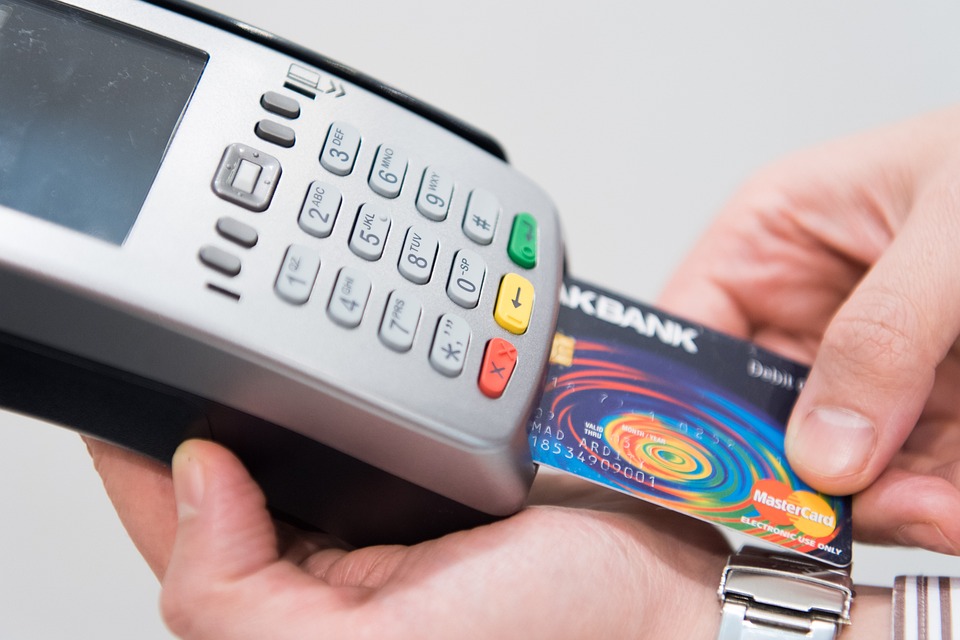FULL LIST OF EDITORIAL PICKS:
BEST MASTERCARD CREDIT CARDS
Before applying, confirm details on the issuer’s website.
Citi® Double Cash Card
Our pick for: Simple cash back
Year after year, the Citi® Double Cash Card has been a top choice among flat-rate cash-back cards. You earn 2% cash back on every purchase — 1% when you buy something and 1% when you pay it off. There’s no 0% intro period for purchases and no bonus categories, but the high rewards rate more than makes up for the lack of bells and whistles. Read our review.
Chase Freedom Flex℠
Our pick for: Bonus category cash back
The Chase Freedom Flex℠ offers bonus cash back in quarterly categories that you activate, as well as on travel booked through Chase, at restaurants and at drugstores. Category activation can be a hassle, but if your spending matches the categories — and for a lot of people, it will — you can rack up hundreds of dollars a year. There’s a fantastic bonus offer for new cardholders and a 0% intro APR period, too. Read our review.
Citi Custom Cash® Card
Our pick for: Auto-adjusting bonus cash back
The Citi Custom Cash® Card offers a lot of value for a $0 annual fee: 5% back automatically in your eligible top spending category on up to $500 spent per billing cycle (1% back on other spending). The list of eligible 5% categories is varied and includes biggies like restaurants, grocery stores and more. And unlike with its competitors, there’s no activation schedule or bonus calendar to keep track of. Read our review.
Citi Premier® Card
Our pick for: Travel rewards
The Citi Premier® Card earns bonus points on airfare, hotels, supermarkets, dining and gas stations. There’s a solid sign-up bonus as well. Read our review.
BankAmericard® credit card
Our pick for: 0% intro APR period
The BankAmericard® credit card isn’t flashy, nor does it aim to be. You get one of the longest 0% introductory APR periods available anywhere, providing plenty of time to whittle down debt or finance a large purchase. And that’s about it. Read our review.
Citi Simplicity® Card
Our pick for: Balance transfers + no late fees
The Citi Simplicity® Card has an excellent 0% intro APR period on balance transfers, and an OK one on purchases. It doesn’t charge an annual fee, late fees or penalty APRs either. Read our review.
Capital One QuicksilverOne Cash Rewards Credit Card
Our pick for: Fair/average credit
This card for people with fair or “average” credit pays the same cash-back rate as the regular Quicksilver card, which targets people with excellent credit. The key difference is that this version charges an annual fee while the regular one does not (see rates and fees). Read our review.
Bank of America® Business Advantage Travel Rewards World Mastercard® credit card
Our pick for: Small business
This is the business version of the issuer’s excellent no-annual-fee travel card. The Bank of America® Business Advantage Travel Rewards World Mastercard® credit card pays solid rewards on every purchase and gives you wide flexibility in redeeming your points for any travel purchase, without the restrictions of branded airline and hotel cards. Learn more and apply.
Capital One SavorOne Cash Rewards Credit Card
Our pick for: Dining and entertainment
Love the night life but dead-set against paying an annual fee? Consider the Capital One SavorOne Cash Rewards Credit Card. It pays a lower cash-back rate on dining and entertainment than the regular Savor card, but the rewards are nevertheless quite good (see rates and fees). The sign-up bonus is smaller than on the annual-fee version, too, but it’s still solid (see rates and fees). Read our review.
OTHER RESOURCES
What is a Mastercard credit card?
If your credit card says “Mastercard” on it, that doesn’t mean the card comes from Mastercard. Rather, it means that when you use it to pay for something, the transaction is processed on a payment network operated by Mastercard.
Every credit card is issued by a bank, and your card account “lives” with that bank. The issuer could be a big national bank like Citi or Capital One, or it could be a smaller institution like a local bank or credit union. There are thousands of banks that issue credit cards, and there are millions of merchants that accept credit cards. Payment networks like Mastercard act as intermediaries, so that those thousands of banks don’t each have to deal directly with each of those millions of merchants (which would be unworkable).
When you use a Mastercard credit card to pay for something, the Mastercard network ensures that:
-
The card is valid for the transaction.
-
The merchant receives payment for the purchase. (That payment comes from the bank that issued the card. You then pay back the bank.)
-
The purchase is reported to your card issuer so it appears on your statement.
The most important features of your credit card are determined by the issuing bank, not by Mastercard. The issuer decides whether to approve you for a card in the first place, as well as how much of a credit limit you’ll get. The fees on your account, the interest rate that applies, the rewards you earn and the perks you enjoy are mostly set by the issuer. The most important thing about the payment network, by contrast, is that it determines where you can use the card.
Mastercard is one of four primary payment networks in the United States. The others are Visa, American Express and Discover. The vast majority of U.S. merchants accept cards on all four networks, but Mastercard and Visa have a slight edge in total acceptance. Mastercard is also widely accepted outside the United States.
🤓Nerdy Tip
A key difference between Mastercard and Visa on one hand and Discover and American Express on the other is that Mastercard and Visa are exclusively payment networks. Discover and AmEx, meanwhile, are both card issuers and payment networks.
Mastercard handles an enormous volume of transactions. According to Mastercard’s annual report for 2022:
-
There were 2.7 billion Mastercard-branded cards in circulation worldwide, including credit, debit and prepaid.
-
The Mastercard network handled 127.5 billion transactions.
-
The network handled $8.2 trillion in payments.
What kind of benefits does a Mastercard credit card give you?
As mentioned, the features of greatest importance to cardholders — the primary costs and benefits of the card — aren’t determined by Mastercard at all, but by the issuing bank. That said, Mastercard does offer some benefits of its own. What’s included in that benefits package depends on what “level” of Mastercard you carry and whether your card issuer has opted into (or out of) certain services.
The three levels of Mastercard benefits are Standard, World and World Elite:
-
At the Standard level, you get basic things like zero fraud liability, emergency card replacement and some ID theft protections.
-
The World level adds in cell phone protection, travel and lifestyle services and some discounts and memberships.
-
The World Elite level offers some incremental benefits over the World package, as well as concierge service.
What’s the difference between Mastercard and Visa?
For most cardholders, the difference between Mastercard and Visa is limited to the network logo on the card. If a merchant takes one, it almost always takes the other. The few exceptions that exist are usually the result of a marketing arrangement, such as Costco’s policy of accepting only Visa credit cards in its stores (although it takes Mastercard debit cards in-store and all four networks online).
Again, the differences that define credit cards are usually set by the banks that issue them, not the networks they run on. Visa does offer its own suite of network benefits, just as Mastercard does, but these are extras that don’t affect your day-to-day card usage.
Mastercard and Visa are so interchangeable, in fact, that some major credit cards have “switched sides.” In 2020, for example, Capital One changed the networks on four cards: Three cards moved from Visa to Mastercard, and one card flipped from Mastercard to Visa. But that change affected only new cardholders; existing cardholders stayed with the network they were already on. Similarly, when Chase stopped issuing the old Chase Freedom® and started offering the Chase Freedom Flex℠, the new card was a Mastercard while the old one was a Visa.
🤓Nerdy Tip
The payment network we know today as Visa began life as BankAmericard, a credit card program created in the 1950s by Bank of America® and later licensed to other financial institutions. Eventually the program split off from its founding bank and changed its name to Visa in 1976. Visa’s original name lives on, however, in the BankAmericard® credit card from Bank of America® … and it’s currently a Mastercard.






